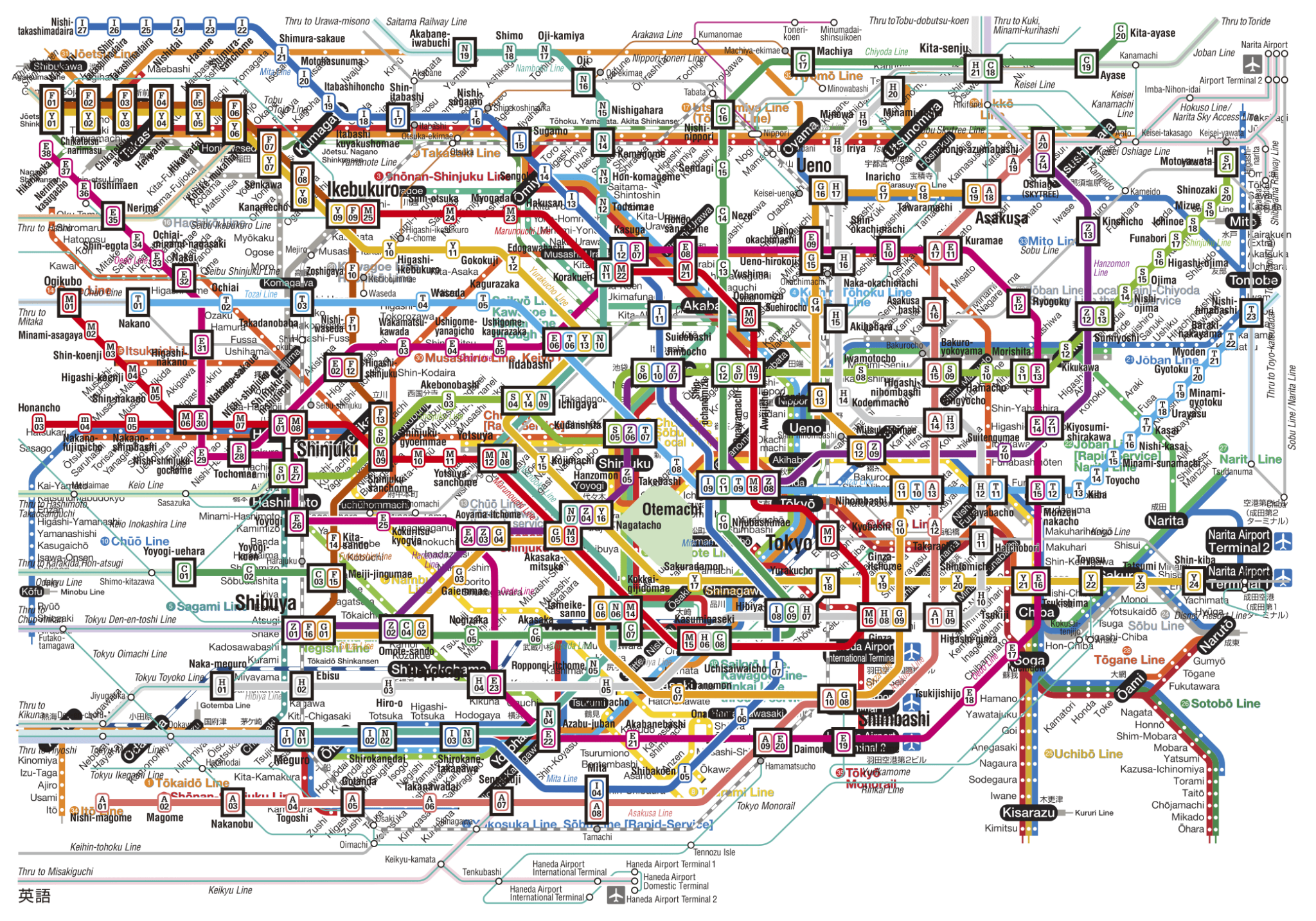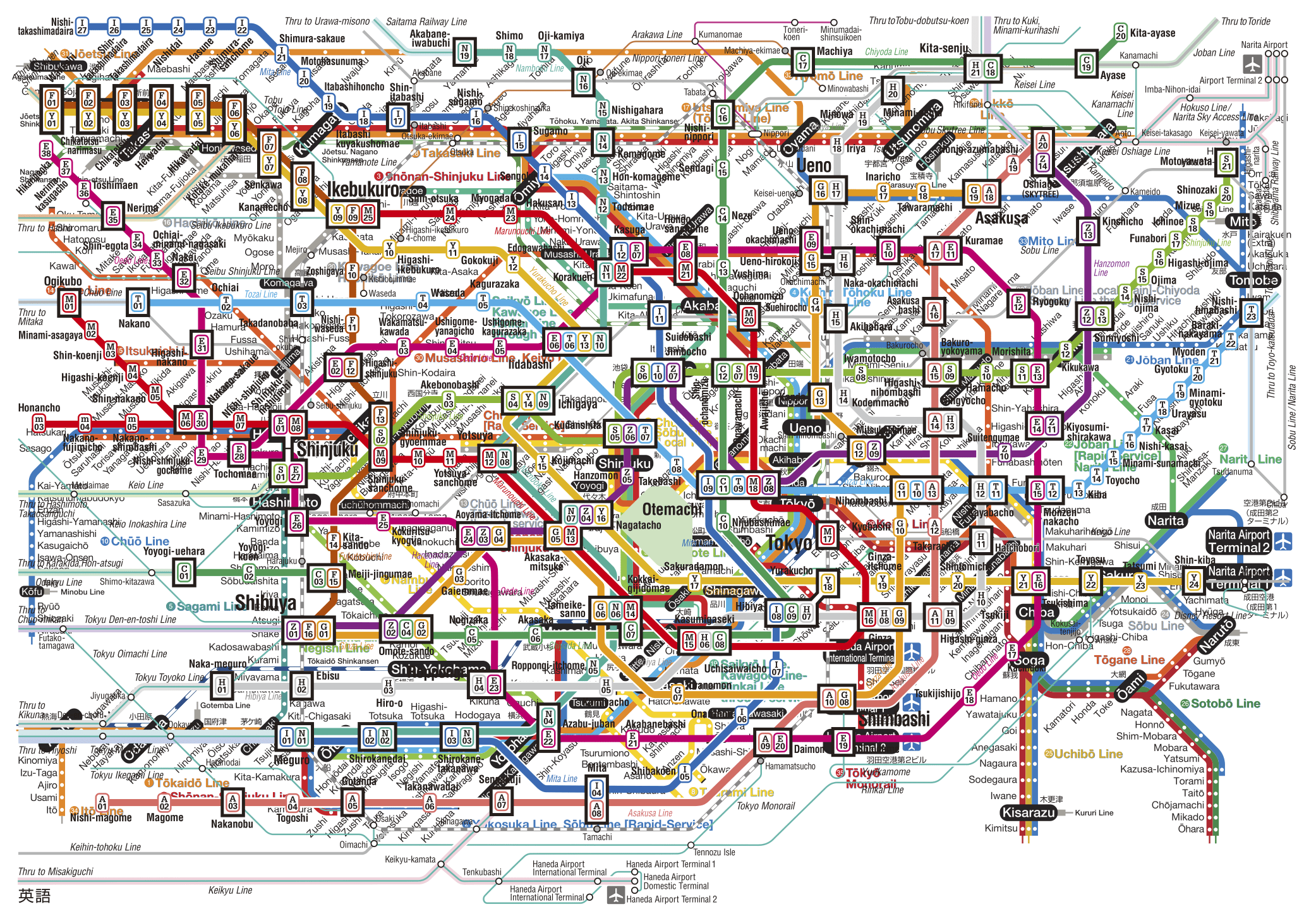Since beginning a full-time job in Tokyo I’ve been taking the train to work, and everyday it leaves me with the weirdest feeling of having just passed through the bowels of some otherworldly monster.
Compelled by an unseen force the monster sucks people into its belly where upon it proceeds to first numb them into submission with its orderly queues and then digest them as everyone is squeezed through its suffocating intestines.
The vacant eyes of a hundred strangers staring into space or down at the glowing rectangles in their hands. The silent scream of the woman being squashed between a bunch of sweaty salary men as they use their elbows to force their way into an already-full carriage.
Not a great way to start the day but as far as metropolitan rail networks go Tokyo’s are as pervasive and efficient as they get. With over 130 lines, 1000 stations and 2,000 km of tracks being ridden by 40 million passengers every day it doesn’t get any denser than this (1 station per 1.6 square mile).
What makes things a little complicated is that there are 30 operators, each with their own maps and timetables. The biggest two are JR East (overground) and Tokyo Metro (underground) – without Google Maps it would be a headache to work out the quickest/cheapest route.

For a bit of fun, I decided to try overlaying the JR and Metro maps and above is the result. I think it provides a nice metaphor for the complexity of the system but I sorely wish I had the time to take a crack at designing a real combined map!


Reply